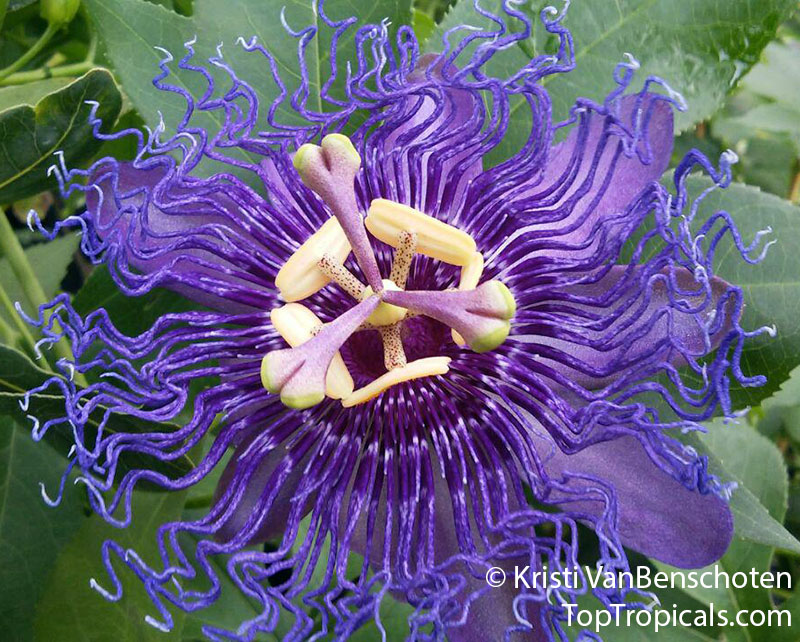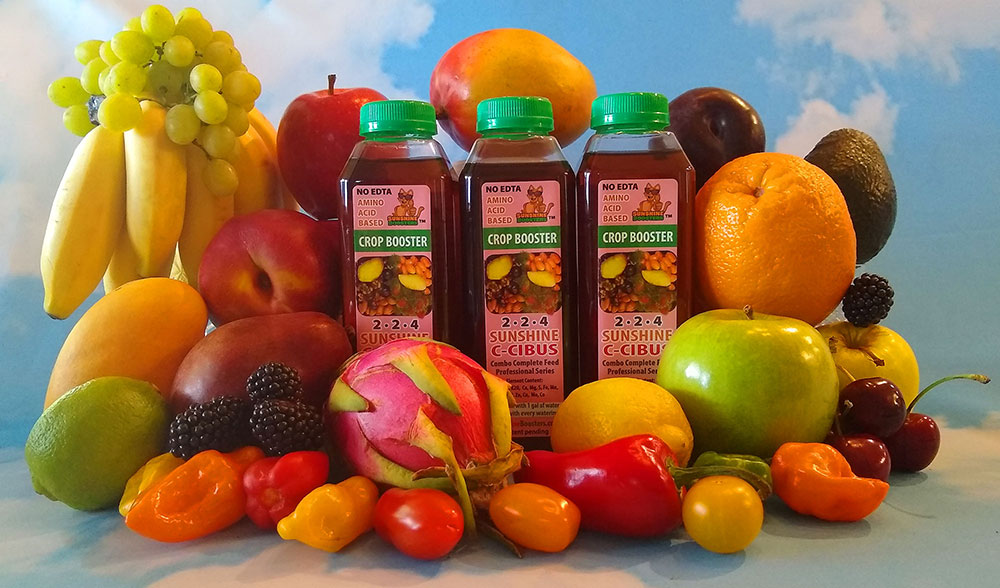The Passion Fruit – Juicy Maracuya
by Alex Butova, the Witch of Herbs and Cats
Alexandra Butova is our columnist, journalist, and photographer, living in Riga, Latvia. She has has been with TopTropicals since Day One (2002), writing about magic plants, travel, and of course cats - from the CatNation she belongs to. Alex is in charge of TopTropicals.ru website.
The Passion Fruit - Juicy Maracuya
There was an unexpected confusion with the name of this plant. Most people understand its name literally: passiflora - a flower of passion, and its fruits - the fruits of passion, implying human, earthly passions. Nevertheless, the passion fruit is so called because it is one of the many species of passion flower, the English translation of the Latin genus name, PassiFlora. Around 1700, the name was given by missionaries in Brazil as an educational aid while trying to convert the indigenous inhabitants to Christianity; its name was flor das cinco chagas or "flower of the five wounds" to illustrate the crucifixion of Christ, with other plant components also named after an emblem in the Passion of Jesus...
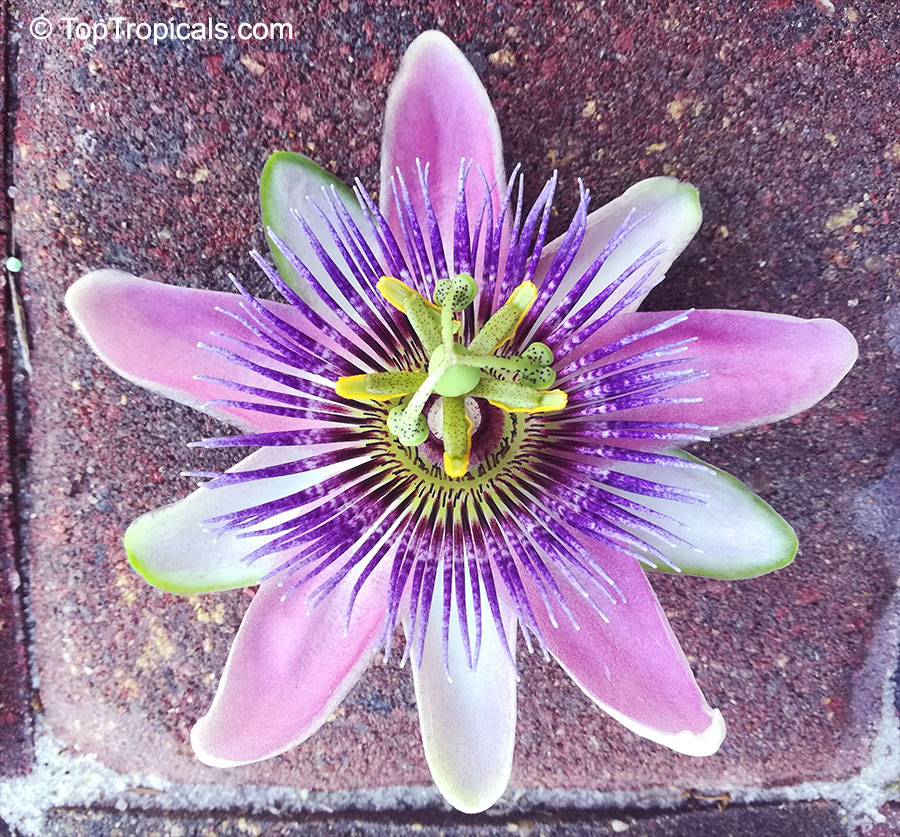
Passiflora, the principal genus, belongs to the Passifloracea family, which consists of 12 genera and approximately 400 known species, about 50-60 of which bear edible fruits, but only a few are of any commercial importance. Many are known only in native markets in South and Central America and the West Indies.
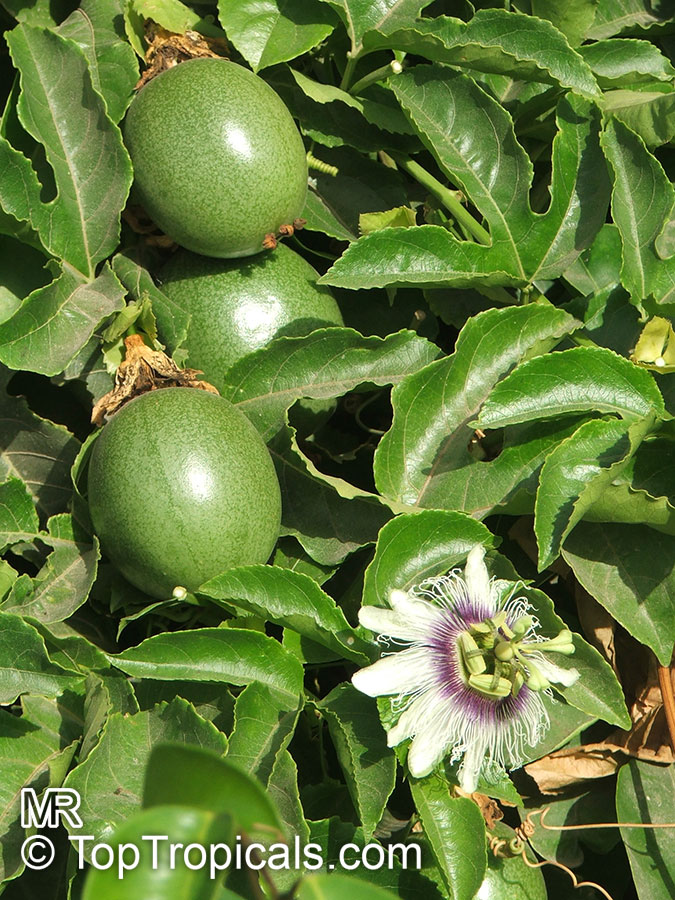
Commercial production of Passion Fruit is based on the purple speciesPassiflora edulis and the yellow formPassiflora edulisflavicarpa. It is still in question whether the yellow passion fruit is a mutant of the purplePassiflora edulisor its hybrid with other species. Passion fruit are commonly called granadilla, parcha, or parchita in Spanish, maracuya in Portuguese, and lilikoi in Hawaiian.

Passiflora edulis is widely grown in tropical and semitropical regions of the world.In theUnited States, it is grown inFlorida,Hawaii, California and other areas with mild winters. They generally have to beprotected from frost, although most cultivars survive light frosts.
Passiflora edulis is a perennial vine that produces a beautiful flower 2–3in wide at eachnode.The flower has 5 oblong greensepalsand 5 whitepetals. The base of the flower is a rich purple with 5stamens, anovary, and a branchedpistil.The pistil bend backward and theanthers, which are located on top of the pistils, have a very distinct head.
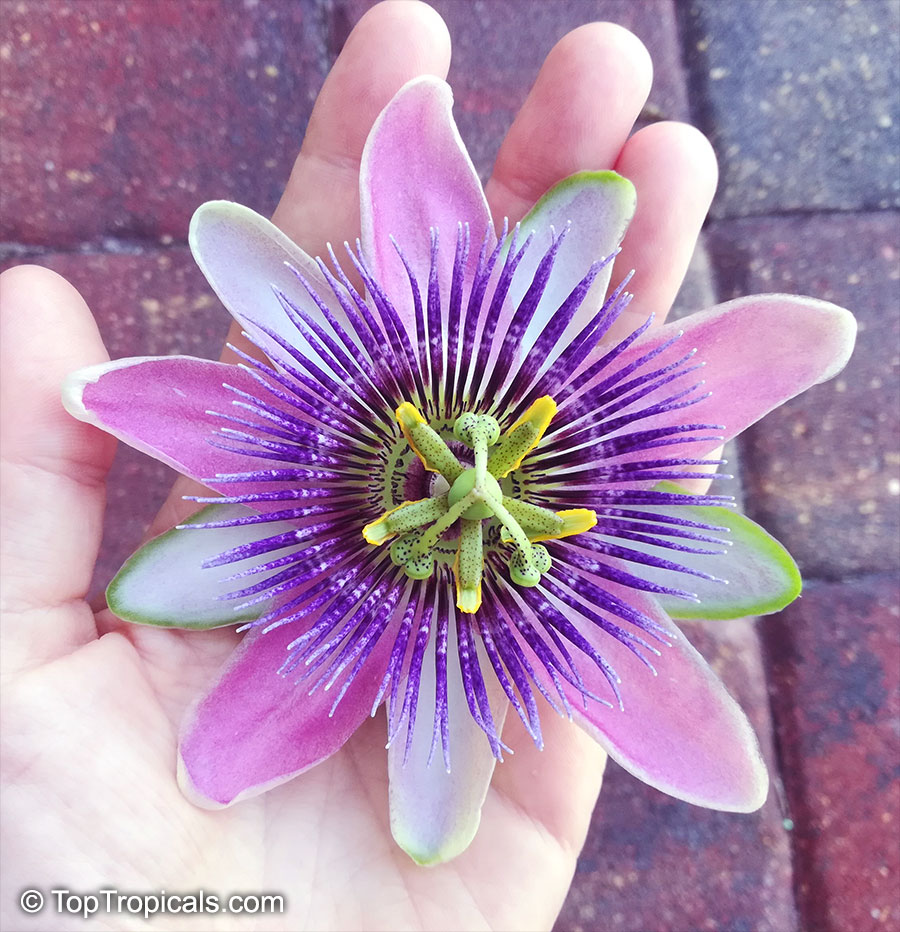
The fruit produced is entirely fleshy (making it botanically aberry), and is spherical to ovoid. The outside color of the berry ranges from dark-purple with fine white specks to light yellow.The fruit is 2-3" in diameter; it has the smooth, leathery rind. Within the berry, there are many black seeds. Each seed is surrounded by a membranous sac filled with pulpy juice.The flavor of the juice is slightly acidic and musky.The passion fruit's flavor is very unique and can be compared to thetropical pineapple or guavafruit.
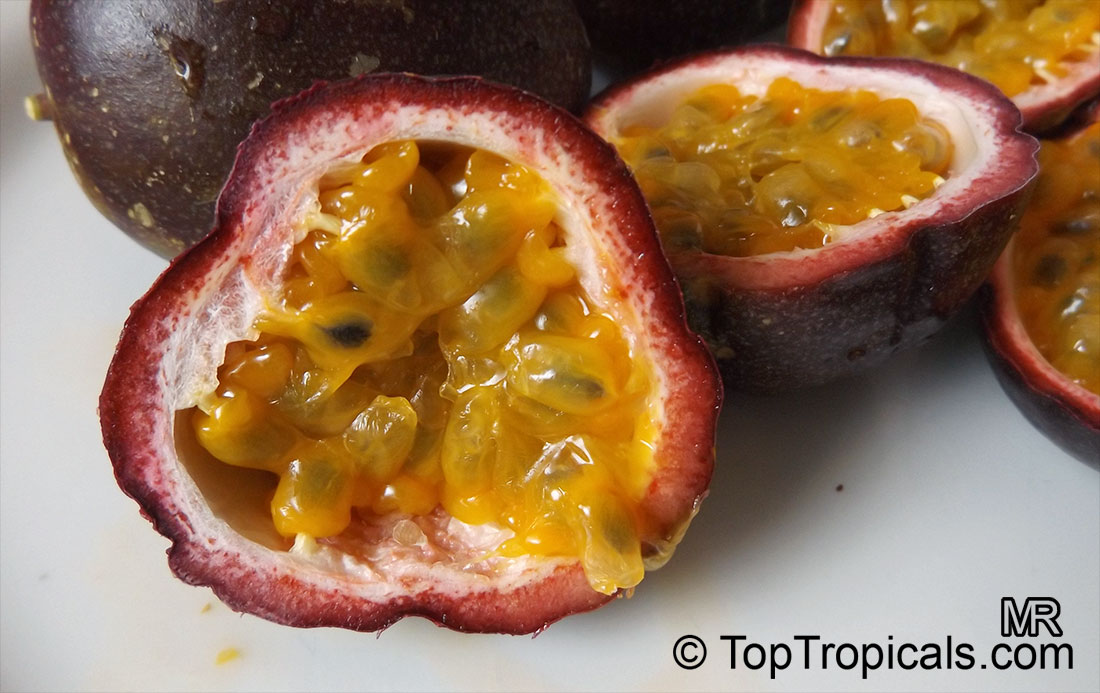
The bright yellowPassiflora flavicarpavariety, also known as yellow or Golden Passion Fruit, can grow up to the size of agrapefruit, has a smooth, glossy, light and airy rind, and sometime has been used as arootstockfor purple Passion Fruit. The dark purple Passiflora edulisvariety is smaller than alemon, though it is less acidic than yellow passion fruit, and has a richer aroma and flavor.
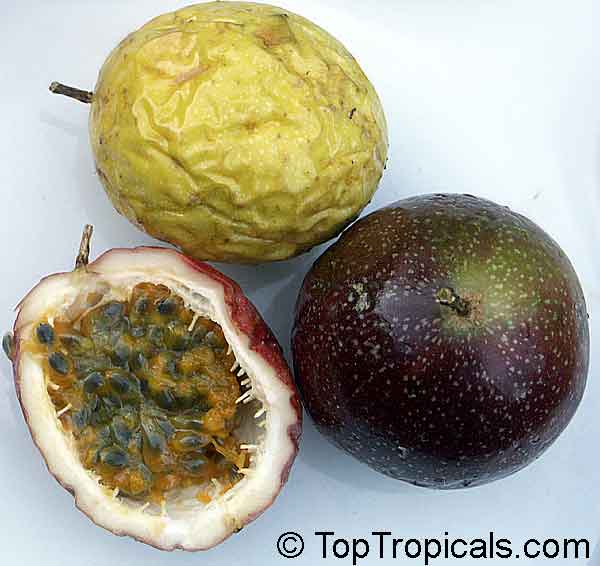
Aside from the skin color, the purple and yellow passion fruits differ in horticultural performance and fruit properties. The purple species is more resistant to cold, is less acid, and is considered superior in aroma and flavor. The yellow form is faster growing, has a greater resistance to soil fungi, has more vigorous vines, bears crops over longer periods, and has a greater yield of fruit and pulp, larger fruits, and more acid juice.
The flower of the yellow-fruited form of the Passion Fruit plant issterile, while that of the purple-fruited form isself-pollinated. It is reported thatpollinationof flowers is most effective when done by thecarpenter bee.
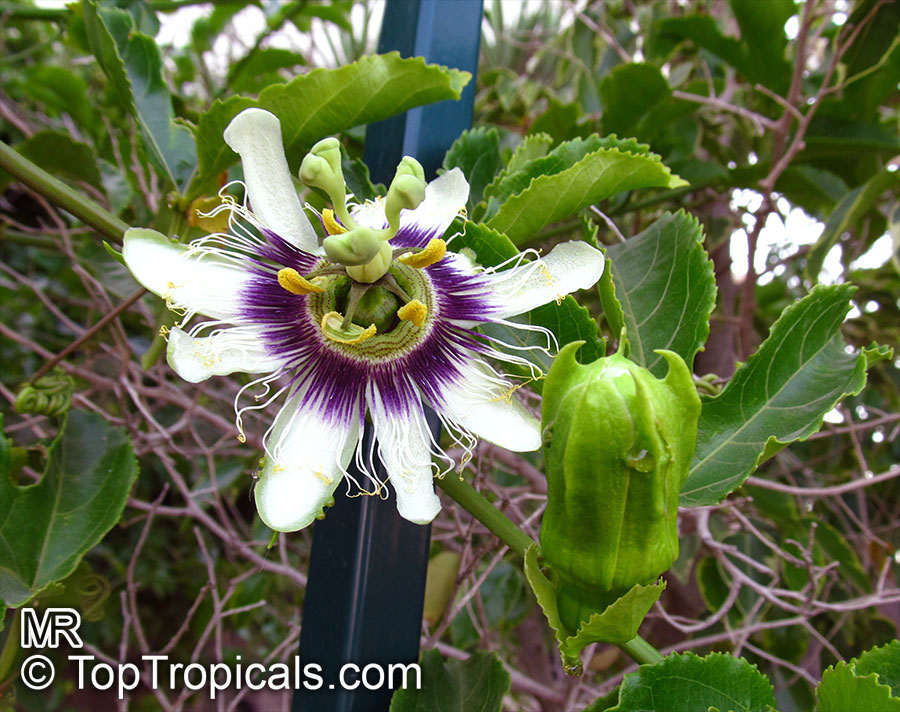
Ripe fruits are used to prepare juice or are consumed directly with addition of little sugar. However, Passion Fruit has wide market applications and is used asflavoring agentin preparation of cake, ice cream, jam, deserts, smoothies, etc.
Passion fruit extract is used in South American folk medicine and modern pharmacology. Nutritionally, the fruits are rich source ofdietary fiber,vitamin C, andlycopene. The subfractions andflavonoidconstituents of the fruit are known to exhibit anxiolytic (antianxiety) properties. Oral intake of peel extract of purple passion fruit is reported to reduce pain and stiffness along with improving physical function in people suffering fromknee osteoarthritis. In several preclinical experiments,Passiflora edulisextracts have exhibited potential effects for the treatment of inflammation, pain, andinsomniaas well as forattention-deficit hyperactivity disorder, hypertension, and cancer.
Growing Passion Fruit
Growing your own Maracuya is pretty easy in both warm climates (in the ground) and in containers (in colder climates). The plant is natually fast growing and vigorous and only requires regular watering until established. Once established, the vine is very tough and relatively drought tolerant.
When growing in the ground, keep in mind that this plant requires some space - it can cover a large fence in no time, in a matter of just one season.

You can grow Pasion fruit in container and successfully have fruit, providing a large trellis and appropriate container size. Since the plant is very fast growing, you may need to step it up in a bigger pot as frequent as twice a year. Eventually a mature, fruiting Passion Vine can happily grow in 7-15 gal container.
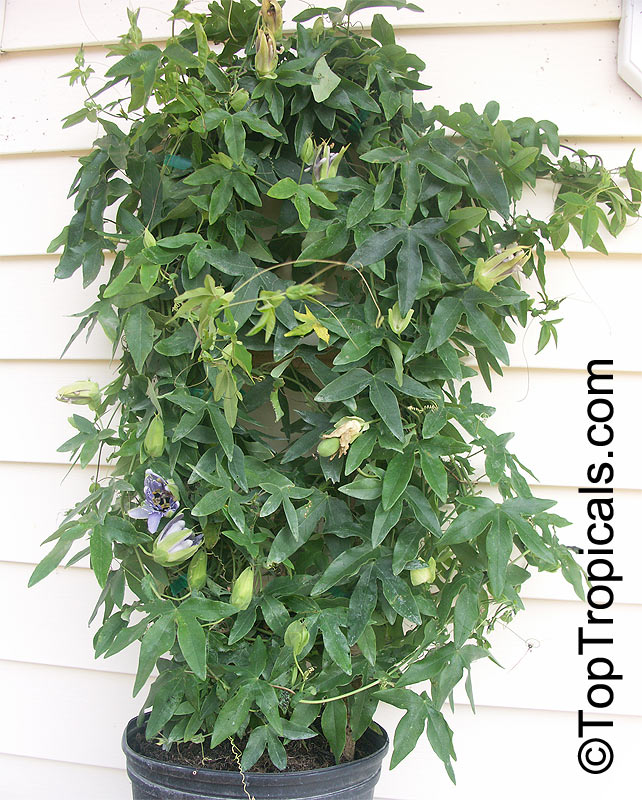
To make sure your Passiflora produces lots of flowers and fruit and not just a bunch of beautiful green leaves, you need... you got it, you need to feed it! We recommend the following plant food:
SUNSHINE C-Cibus - Crop Nutrition Booster
SUNSHINE-Honey - sugar booster
To read more about beautiful and useful Passifloras, check out or Tropical Treasures Magazine issue # 20 (2) 2012, article PASSION FLOWERS REVEALED:
- hard copy
- electronic version PDF file download (8.6 Mb)
"...Frequently seen in botanical gardens and nearly all tropical environments, Passiflora, also known as the passion flower, sends all admirers into appreciation of what a flower can truly be. Though some modern beliefs may lead you to think that the name “passion” in passion flower derives from lust, or desire, or an exotic sexual implication, this is far from the truth..."
